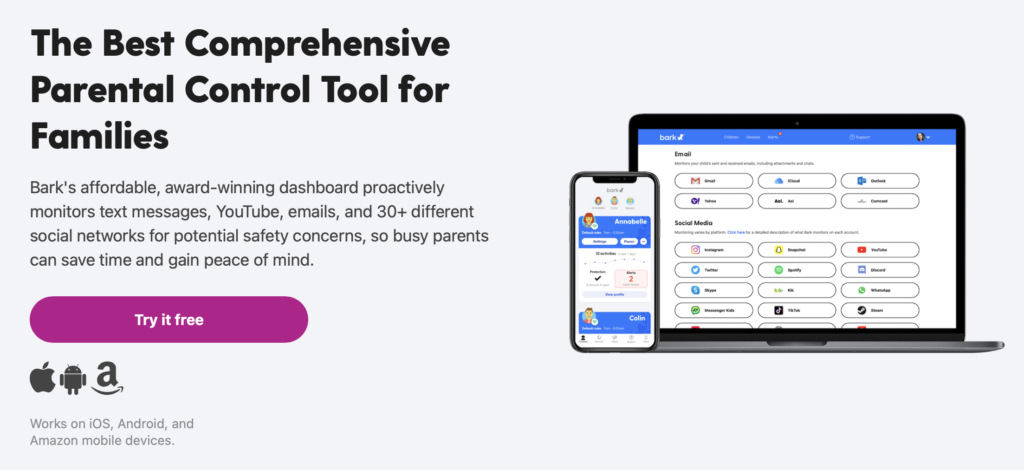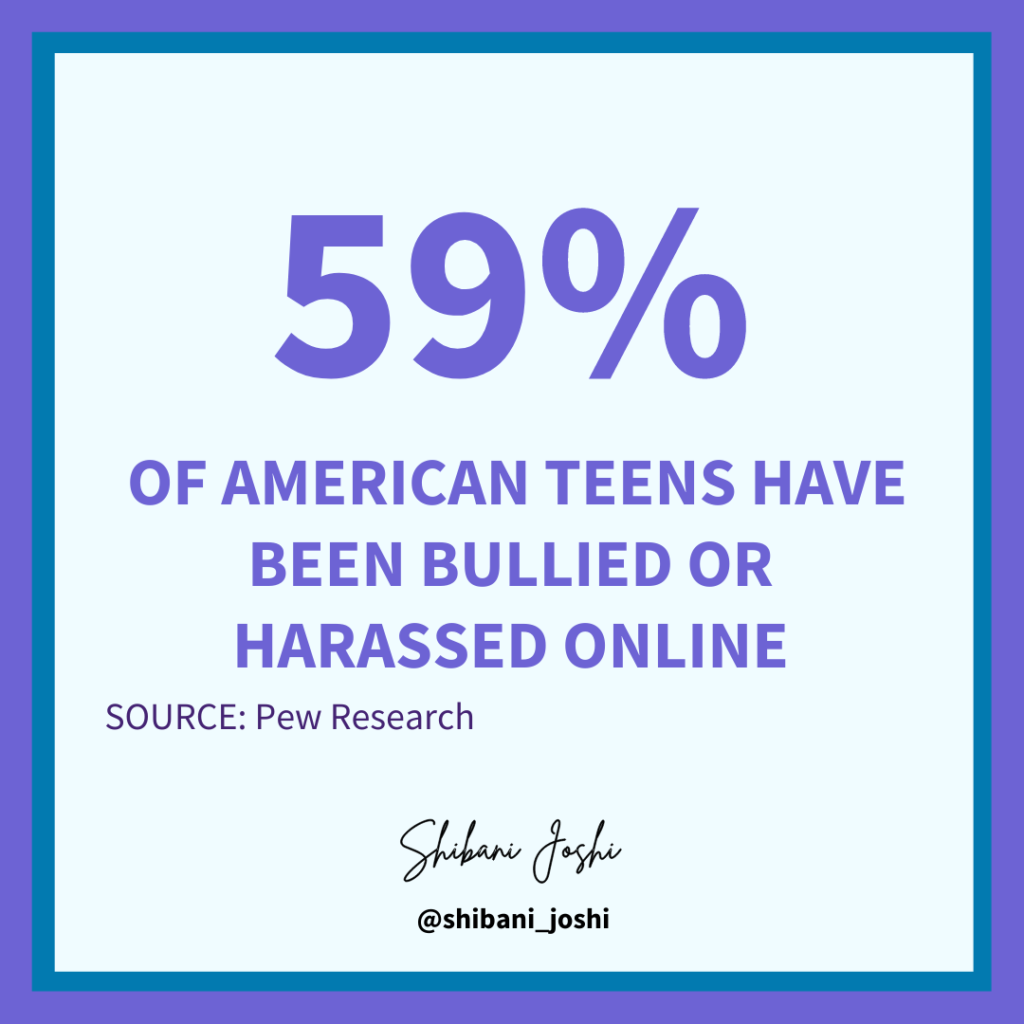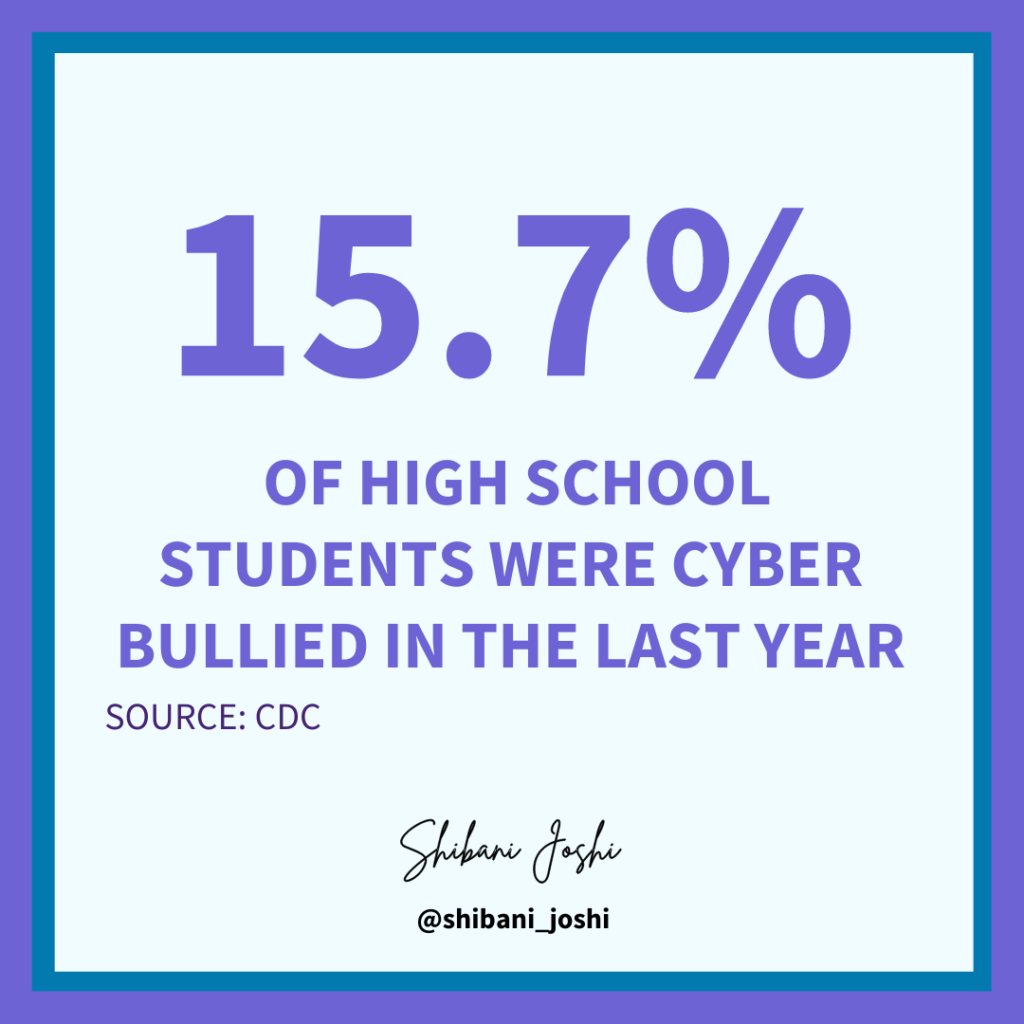As screen time rises for children, so does the rate of cyberbullying. In fact, according to L1ght, hate between kids and teens during online chats has risen by 70% during the pandemic. While you can’t bully-proof your child, there are things parents can do to help protect their kids online. I explore some options.
October is National Bullying Prevention Awareness Month, which brings awareness to bullying issues that children face. Depending upon which study you look at, according to Dr. Laura Markham, “40 and 80 percent of middle schoolers admit to participating in bullying behavior, so clearly our culture bears some responsibility for the pervasiveness of bullying.” Addressing this issue requires a broad, cultural conversation.
Some additional stats:
A recent expose’ by the Wall Street Journal has also drawn attention to the toxic effects of social media on girls. An internal Facebook report showed that viewing Instagram makes body image issues worse for 1/3 teen girls. I have been commenting on TV about this study and sharing my own family’s view on social media.
With more than 22m teens logging onto Instagram alone in the United States, social media is a fixture in our kids’ worlds. As kids spend more time online, the risk of cyberbullying increases. Stats show that it is more likely to happen between friends and people that know one another. Because of this, cyberbullying is a challenge for parents to identify because we, nor others, see it play out like physical bullying. Unfettered access to multiple devices can give a bully more opportunity to prod well after school hours. Coaching our children about online rules, etiquette and safety is crucial in keeping our kids safe. I discussed some tips on TV, as well.
6 tips to keeping your kids safe and prepared for bullying online:

- ESTABLISH HEALTHY TECH BOUNDARIES WITH KIDS EARLY – It is important to have regular discussions as a family to discuss what your family rules are online. Implement family time where devices are put away. Model this same behavior yourself.
- USE SOFTWARE TO MONITOR ACTIVITY ONLINE – keeping an eye on your child is easier with the help of parenting software that maintains privacy. Circle, Bark and Qustodio are solid options for tracking your child’s activity across computers, mobile and tablet devices. Be sure to verify your software is compatible with your PC or Mac.
- KEEP DIALOGUE OPEN WITH CHILDREN – When your child first begins to use social media, help them with it. Keep conversations light and open. This helps to reinforce a theme that your child can turn to you.
- TEACH ONLINE EQ – Kids do not understand the permanence of online activity. What they do can impact their reputation, ability to get a job and more. Coach them on the implications of their words and actions. Role play handling online conflict and how to recognize items that could hurt or embarrass themselves or others.
- FRIEND OR FOLLOW YOUR CHILD – implement the rule that, as a parent, you are always allowed to friend or follow your child. This allows you to gain insight into your child’s online behavior and to proactively monitor the account
Even with the measures above taken, your child is still likely to experience cyberbullying. Parenting experts say that behavior changes are key indicators of a problem. Isolation, withdrawal and even addiction to devices are red flags signaling that your child may need help. For more resources on bullying, explore government resources here.

